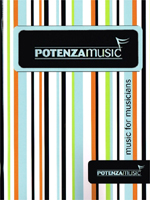Gates Stonehenge, op 62
15-Part Brass Choirs w/Percussion

-
Gates
Stonehenge, op 62 [464.01 w/timpani & percussion]
21st Century (2011). This composition grew out of a musical concert in Chicago sometime in 1981. The concert was an outgrowth of public opinion about the superiority of various ensembles in three of the top five US Symphony Orchestras of that period. The Philadelphia Orchestra under Eugene Ormandy had the reputation of having the most luxurious string section of any orchestra in the world. Ormandy was a superior violinist himself, and worked his strings into providing a similar luxurious string soundof which he himself was master. It was agreed that the Boston Symphony had the top woodwind choir, and the Chicago Symphony the best brass choir.An outgrowth of these widely held opinions occurred in Chicago in 1981 when the Chicago Symphony Brass section announced a performance in Symphony Hall. The event attracted a sell out crowd and standing room overflow. Public interest was keen and intense. The detail of the concert included brass solos, duets and trios of a wide variety and concluded with a large brass choir work by a local composer, which had been commissioned to premiere in this concert.
The musical evening was marvelous, a brilliant triumph for superlative brass players of world-class quality. Afterwards the players remained on the stage and were beset by hundreds of congratulating fans. The principal horn, Dale Clevenger, was a friend of mine who was present at the International Horn Conference in 1974, when Barry Tuckwell of the London Symphony premiered my Sonata for Horn and Piano. I congratulated Dale on the brass wonders that we had all just witnessed, and commented that the final brass work was somewhat disappointing. Dale said that he and the other players felt the same. At that point, Dale said "Why don't you write a work for the Chicago Brass for our next offering?" How could I not be complimented by such an invitation? I immediately started to write "Stonehenge," having just visited Stonehenge in Britain a month or two earlier. But the Chicago Brass did not have a follow up to their first presentation, so there was no opportunity for my new work to be performed by them.
Later there was a premiere in Madison, Wisconsin, by three professional brass quintets who were together hosted by the School of Music of the University of Wisconsin. They were joined by four superb percussionists from the Madison Symphony. "Stonehenge" received a wonderful ovation from an enthusiastic full house audience, and that led to wide use in the Midwest by other brass groups, including a professional brass choir in Minnesota, which recorded the work superbly, and two different tours of the workby a brass choir from the Indiana University School of Music. -the publisher
-
- Category: 15-Part Brass Choirs w/Percussion
- Item: 092180
- Grade/Level:
- Price: $49.95
-
(usually ships in 6 to 9 days)
